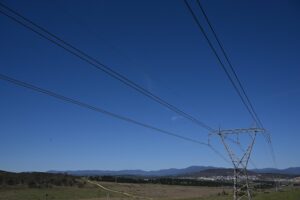(Note: This article has been updated to correct leakage rate that cause the net climate effect of gas to double. The leakage rate is 2.6%, not 1% as originally published)
According to the Department of Climate Change and Energy Efficiency website, old electric-element-style hot water systems (that about half of households still have) “produce up to three times the greenhouse gas emissions of low emission technologies such as gas, solar and heat pump systems.”
The website recommends, that “changing your electric water heater for a low emission gas, heat pump or solar system, you can reduce your energy consumption, cut your greenhouse gas emissions and save money on your power bills.”
As far as heat pumps go, and electric or heat pump boosted solar, it’s hard to argue. But for fossil gas appliances, that “low emissions” tag is plain wrong. Now, we could just criticise it by asking whether “low emissions” is good enough. Many think there’s enough scary climate science reports to mean that “low emissions” halfway measures are not good enough.
It’s true that at the point of combustion, fossil gas produces about half the emissions of coal for the same amount of energy. We could debate about whether the emissions cup is half full or half empty at this point, but that would be a diversion. In truth, if you look past the point of combustion, the cup is overflowing.
Previously, Beyond Zero Emissions have pointed to the fugitive/migratory emissions from coal-seam gas as a big question for just how low the emissions of future (and some current) gas supply will be. This concern is now gaining mainstream attention, as evidenced by the ABC TV Four Corners program last week. It’s a serious worry, given that CSG is the fossil gas industry’s future.
Beyond Zero Emissions’ Buildings Plan researchers have put together a short briefing paper drawing on the available research into the various problems of using gas, and conclude that gas use should be phased out (in buildings in particular) – based primarily on its climate impact.
The key reason is that all gas networks leak, not just at the well head. The only question is how much. There is some limited data out of South Australia that suggests the gas networks’ leakage there is in the order of 7%, whereas official government figures put it at around 1.5% nationwide. In reality, in most areas, it’s probably somewhere in between.
Fossil gas is methane. The 20-year Global Warming Potential (GWP20) of methane is currently understood to be about 105 times that of CO2. The next 20 years – the next 10, even – are crucial if we are to avoid climate change, so there are very good reasons to consider GWP20 rather than the more common GWP100.
And with GWP 20, it only takes about 2.6% leakage to effectively double the net climate effect of gas. That is, the 2.6% that would be leaking as methane would have the same warming effect as the other 97.4% being burned, over the next 20 years. This doubling of emissions already makes fossil gas roughly equal in impact to black coal.
A recent study in Manhattan went beyond the gas industry reporting/estimates of leakage (which are said to be 2.2% there), but measured the methane levels around Manhattan with a cavity ring-down spectrometer.
This is the same instrument and method used by Southern Cross University researchers who recently uncovered alarming levels of methane around the Tara CSG fields in southern Queensland. Methane disperses quickly, so locally elevated levels are significant and indicative of a strong nearby source. The Manhattan study found gas networks’ leakage to be around 5%, according to the researchers.
For Australia, even the official 1.5% leakage rate gives fossil gas no great climate advantage over coal, on the timeframe we think is important. We could do more work to find out what the real leakage rate is and if it is higher. BZE recommends phasing out all use of gas in buildings in a short (less than ten years) timeframe.
It’s still a challenge to supply all electricity with renewable energy, but we know that can be done. You can buy renewable electricity today; not so renewable gas. Supplying renewable bio-gas in large quantities is a very land-intensive process, and as far as methane leaks go, doesn’t solve much.
If you like to think in epochal terms, we’re looking for the beginning of a new one: the post-combustion era. “Re-inventing fire” as Amory Lovins has put it. Combustion (first wood, later fossil fuels) has been a fundamental constant in human society’s development. Is it possible to move beyond that yet?
For almost all of what is currently done by combustion, the answer is yes. Certainly in the case of home hot water, heat pumps (electric devices to harvest solar heat from the air) already outperform gas appliances. Reverse cycle air-conditioners (which are also heat pumps) do the same for home heating. Electric induction can generally cook as well as or better than gas stoves.
With any technology that carries some risk, we weigh the hazard against the benefits. For electricity – even 100% renewable electricity – there are still hazards and problems. But for gas, that balance has now shifted, especially as fossil gas supply is now moving to CSG. We’re seeing that the hazard is much greater than we once thought, and the benefit much less.
If DCCEE would just cease promoting new gas-burning appliances on its websites – or better, regulate to ban new gas installations – we would be getting somewhere. Ceasing gas use in buildings is one of the low-hanging fruit in a larger fossil fuel phase out. Fortunately, renewable energy and efficient electric appliances are up to the task.
Richard Keech works for Beyond Zero Emissions on the Zero Carbon Australia Buildings Plan, which is expected to be published in mid 2013. BZE has just released a 2-page briefing paper on the many reasons why they recommend no more fossil gas use in buildings, which is available for download here. Several of the points in this article are referenced in the paper.








